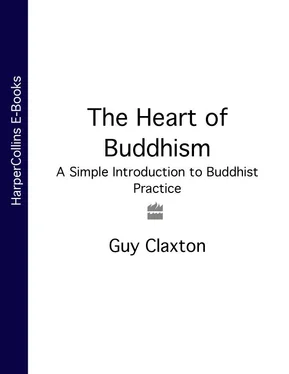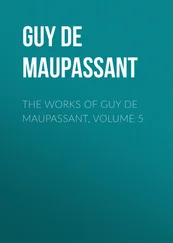
THE HEART OF BUDDHISM
A Simple Introduction to Buddhist Practice
Guy Claxton
For the whanau, who help me to live it.
Peace, peace! he is not dead, he doth not sleep –
He hath awakened from the dream of life –
’Tis we, who lost in stormy visions, keep
With phantoms an unprofitable strife,
And in mad trance, strike with our spirit’s knife
Invulnerable nothings. – We decay
Like corpses in a charnel; fear and grief
Convulse us and consume us day by day,
And cold hopes swarm like worms within our living clay.
He hath outsoared the shadow of our night;
Envy and calumny and hate and pain,
And that unrest which men miscall delight,
Can touch him not and torture not again;
From the contagion of the world’s slow stain
He is secure …
He lives, he wakes – ’tis Death is dead, not he;
Mourn not for Adonais.
— Percy Bysshe Shelley: Adonais
Title Page
Dedication
Epigraph
Preface
1 - Why Buddhism?
Who is the book for?
Who is it not for?
Two things Buddhism is not
The fruits
What draws people to Buddhism?
Why now?
The plan of the book
2 - A Peace Missing
The programme of research
The game plan
Pain and death
3 - No Hard Feelings
Fear
Guilt and shame
Anger
Jealousy
Sadness and grief
Meanness
Loneliness
Tension
Happiness, peace and love
4 - Trouble In Mind
Unconsciousness
Thinking
Karma
Sub-selves and impulsiveness
5 - The Ground Flaw
Self-image
Anatta: the bottom line
6 - Attention, Attention, Attention
Believing is seeing
The Wise Lady from Philadelphia
Watching the fruit machine
Types of meditation
7 - Buddhist Support Systems
The Noble Eightfold Path
Buddha
Puja
8 - The Fruit of the Path
Daily life practice
9 - Becoming a Buddhist
Do I need a teacher?
How do I choose a teacher?
Which brand of Buddhism is for me?
What difference will it make to my life?
What if I want to give it up?
When is the best time to start?
Glossary
Further Reading
Bibliography
Searchable Terms
About the Author
Copyright
About the Publisher
TWO things are certain. The first is that I have not communicated the full subtlety and power of the Buddhist teachings. That can only be done by people who have made them real in their own experience – people that Buddhism calls ‘enlightened’ – and although some of the Buddhist schools, especially Zen, confuse the beginner by insisting that we are all enlightened already, I am far from having authenticated this optimistic proposal for myself. Nevertheless there is a place for the middleman, for, as undergraduates quickly find out, graduate students often make better teachers than do Nobel Laureates.
The second sure thing is that reading this book won’t do the job for you. For that you have to set out on the journey yourself: you can’t get there by sitting by the fire reading the brochures. All a book can do, this or any, is give you a sense of what the ‘Inward Bound’ course of Buddhism involves, where it is heading, and why it appeals to so many people.
One of the things that has made my own progress slow, and which the texts often warn against, is that I have spent a lot of time shopping around, trying out different kinds of spiritual pursuits, not all of them Buddhist. A certain amount of this is healthy; it enables you to search out a tradition and a teacher with a style that feels right for you. But too much and it begins to look like a lack of commitment. I have been, as one of my teachers described me, a bit of a spiritual autograph hound. But I hope that all this eclecticism may, as a consolation prize, have enabled me to write to my title, and to try to escape from the trappings of any particular Buddhist school and return to the essence, to the heart.
The teachers in my autograph book are both traditional and ‘non-aligned’ as we might say. The traditionalists include the Soto Zen Master Asahina Sogen, whom I met in Tokyo; Japanese Zen Master Maezumi Roshi and his ‘dharma heir’ Genpo Sensei, with both of whom I have taken courses in England; Myokyo-ni (Dr Irmgard Schloegl) of the Buddhist Society in London, and Daishin Morgan, Abbot of Throssel Hole Priory in Northumberland; Seung Sahn Sunim, a Korean Zen Master who ran a retreat in London several years ago, and mainly teaches in Connecticut. From the Tibetan tradition, I have received teachings from the dzogchen master Namkai Norbu, from the Venerable Geshe Ngawang Dhargyey, for many years principal teacher at the Tibetan Library in Dharamsala; and have attended several retreats run by the Venerable Lama Sogyal Rinpoche. And I have enjoyed many conversations with Stephen Batchelor, Buddhist scholar and a Tibetan monk for eight years (as well a Korean Zen monk for four) – who also very kindly commented with great care on a draft of this book. From the Theravadin tradition I have learnt from talks by Ajahn Sumedho in London and retreats with Ajahn Kittisaro, Christopher Titmuss, Henrietta Rogell, Joseph Goldstein and Sharon Salzberg in Devon, all trained by venerable Thai and Burmese Buddhist teachers; and from longer retreats, one accompanied by a six-day cyclone, with Michelle MacDonald and Stephen Smith in New Zealand.
Then there are the teachers I have spent time with who do not call themselves Buddhists, but who seem to me to represent and to convey, in their very different ways, something of the same spirit: Douglas Harding, Barry Long, Werner Erhard and Bhagwan Shree Rajneesh (as he was when I knew him). To all of them I express my gratitude for their dedication and their generosity, and apologize for the places in the book where I have misrepresented what I have not fully understood.
Finally in this roll-call of thanks come four groups of people who have supported my body and improved my mind. First the members of the Buddhist psychology group that has been meeting in beautiful places in England and Wales for several years now to have fun and discuss the dharma: Sue Blackmore, John Crook, David Fontana, Colette Ray, Martin Skinner, Myra Thomas and Michael West. Second, my friends at Sharpham, especially Maurice and Claire Ash, Stephen and Martine Batchelor, Katie Mitchell, Henrietta Rogell, John Snelling, Tim Sweeney and, of course, Iza the Cheeser. Third, my friend Artemis Morou, and her sister Antigone, for letting me hide and write in their houses in Athens and on the beautiful island of Syros. And last the Carrs, for their love and their bach.
I said to Heart, ‘How goes it?’ Heart replied:
‘Right as a Ribstone Pippin!’ But it lied.
– Hilaire Belloc
THIS book is for people who are newcomers to Buddhism – or who wish to remind themselves of the basics. You may have picked up some ideas about it from conversations that have whetted your appetite, perhaps. You may have begun to think seriously about ‘what it’s all about’, and to search around for approaches that will help you. Or you may have a friend, a son or daughter, or even a parent, who has started to study or practise Buddhism, and you want to know what they are up to. If you yourself are already involved in Buddhism in some way, then this might be the book to give to people you care about to help them understand what you are involved with. Buddhism sometimes comes wrapped in mystery, and it can seem a weird thing for a nurse or an accountant or a head-teacher or a computer programmer to get interested in. What I want to do in this book is to explain what the essence of Buddhism is, and why Buddhism, far from being a nutty thing to take up, is actually the most rational and timely pursuit in the world. I want to try to give you a feel for Buddhism, and for its relevance to the kind of life we lead today.
Читать дальше













